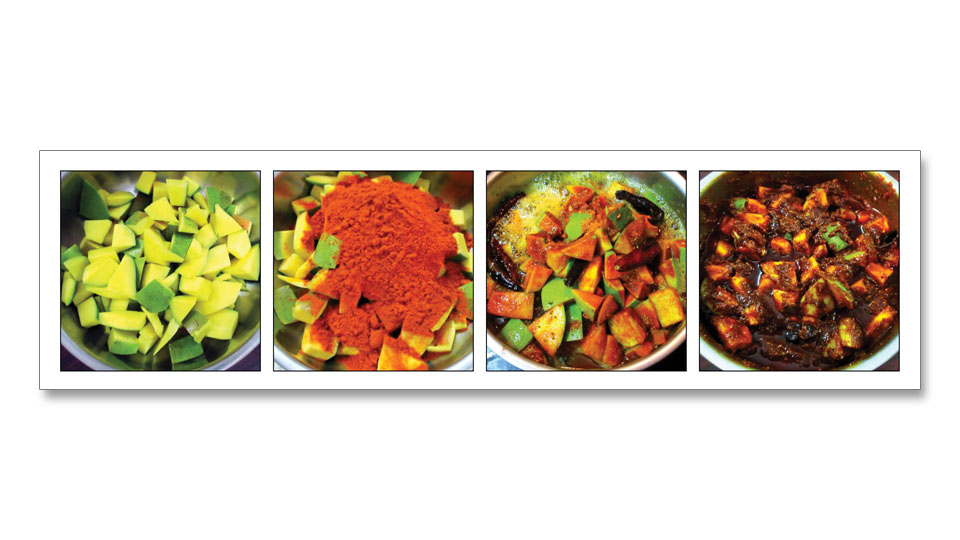By D. Lalitha Rao
I like to call myself a foodie. All kinds of foods interest me even though I may never get to taste more than half of them. At my time of life, one is content with simple Indian fare without much oil and spice. During my growing up years, I was extremely partial to chicken no matter how it was made. Now I can barely finish one small piece without feeling full and stuffed. That does not mean I don’t love biryani or the varieties of food we get in the South and the North but my stomach protests!
Recently, my chef son was visiting us with my daughter-in-law and grandson. In between tending to baby and feeding him, they managed to produce mouth-watering paneer dishes, kathi rolls, omelettes and what not. It was a constant run between the kitchen (which holds only two people) and the living room so I was banished and sat with baby on my lap. How I loved those days.
Anyway let me get to the more important core of my discourse which involves a specialty I challenge anyone with Indian or even sub-continental blood (let’s be generous) in their veins to refuse to eat. I’m talking, of course, about pickles. Just as cultural ties and social mores bind us into something we call Indian, our food tastes too bring us together. Unless it’s for health reasons, the Indian palate loves hot and spicy — see how we have changed the concept of Chinese food and made it uniquely our own, called Indian Chinese. So also with achaar, urugai, uppinkai, call it what you will.
The pickle season is upon us, the days are slowly heating up and what better herald of hot season than the taste of tangy sour, spicy and sweet pickles? Not for us the western concept of pickle which is merely cucumbers boiled in brine and seasoned with dill and black peppers. We like it mind-blowingly spicy, oily and in a hundred varieties.
Everyone has a granny who makes pickles when the time is right. Mangoes are cut and salted, gooseberries chopped or steeped whole in masalas, every blessed kind of vegetable and fruit from wood-apple to bitter-gourd, cucumber to drumstick is combined with delicious chilly powder, salt, mustard, oil fennel, asafoetida and a dozen other spices, to make the final product that lands up on our table and is eagerly scooped up.
For a South Indian, just as there is quite nothing like the combination of curd rice and lime pickle, in the North the flavours and combinations are different and include the famous cauliflower, turnip and red carrot pickle. This is actually made from winter vegetables when the days are warm and dry, and it lasts well into the summer. There is also the pachranga which, as the name suggests, is a mixed pickle made up of mango, chickpeas, lotus stem, gooseberries and lime. Superb with parathas and raita; you don’t need anything else to make a full meal.
The Coorgs have their lip-smacking pork pickles and elsewhere even chicken and mutton are pickled with the right spices. In Goa, you will find fish and prawn pickles of a staggering variety. Now, of course, everything is available everywhere.
Earlier I did mention that everyone has a granny who is the pickle source. But what if you’re living in Hoboken New Jersey and ajji’s pickles can’t reach you that easily? What if granny has long departed to a better place and you are dependent on the shop stuff? Sad, but we all have to adjust, right? Not so! For all the millions of Indians living in the US there is no need to fear. There are pickle manufacturers and suppliers there too, and will mail you anything from Andhra Avakai to Bengali sweet lime.
I have a source in Hyderabad, dear man that he is, he makes the most wonderful Andhra pickles and couriers them to us in drip-proof foil and plastic. He has a load of customers in the US extending from the Bay Area in San Francisco to Manhattan on the East Coast. Recently, he had gone to a special town in the heart of Andhra called Nuzvidu to buy mangoes and chillies for his fresh seasonal stock of various mango pickles. As you know, we Telugus consider mango pickle to be the king of the table and I myself can list a half dozen varieties like Avakai with jaggery, Avakai with garlic, Hyderabadi Avakai, and so on.
I have a striking memory of childhood and avakai. Grandmother would make the pickles after all the chopping, mixing of kharams and mustard and it would be fiery hot. My grandpa simply could not wait for the pickle to stew in the sun for three days, and would insist on eating it mixed with hot rice and ghee on the day it was made. It gave him great pleasure I’m sure. The other contender to throne is Gongura, the green leaf that Mysureans are not very familiar with. Gongura or Sorell as it is known is kind of related to Marijuana but fortunately has no hallucinogenic effect. It just tastes so good with a dollop of ghee on rice.
In our little gated community, we have a few mango trees that still have raw fruit. I have been making instant mango pickle with chilly powder, salt, asafoetida, mustard seeds, fenugreek and red chillies. This is the only way I know how to make mango pickle; avakais are way too complex for me to attempt. Okay, so I binged on the pickle and now have a raw and sore throat, but no regrets. Enjoy the pickle season while it lasts. No, correct that to the whole year round. My man in Hyderabad is sending us his new stock very soon so something nice to look forward to. Bon appetit.
e-mail: [email protected]








Recent Comments